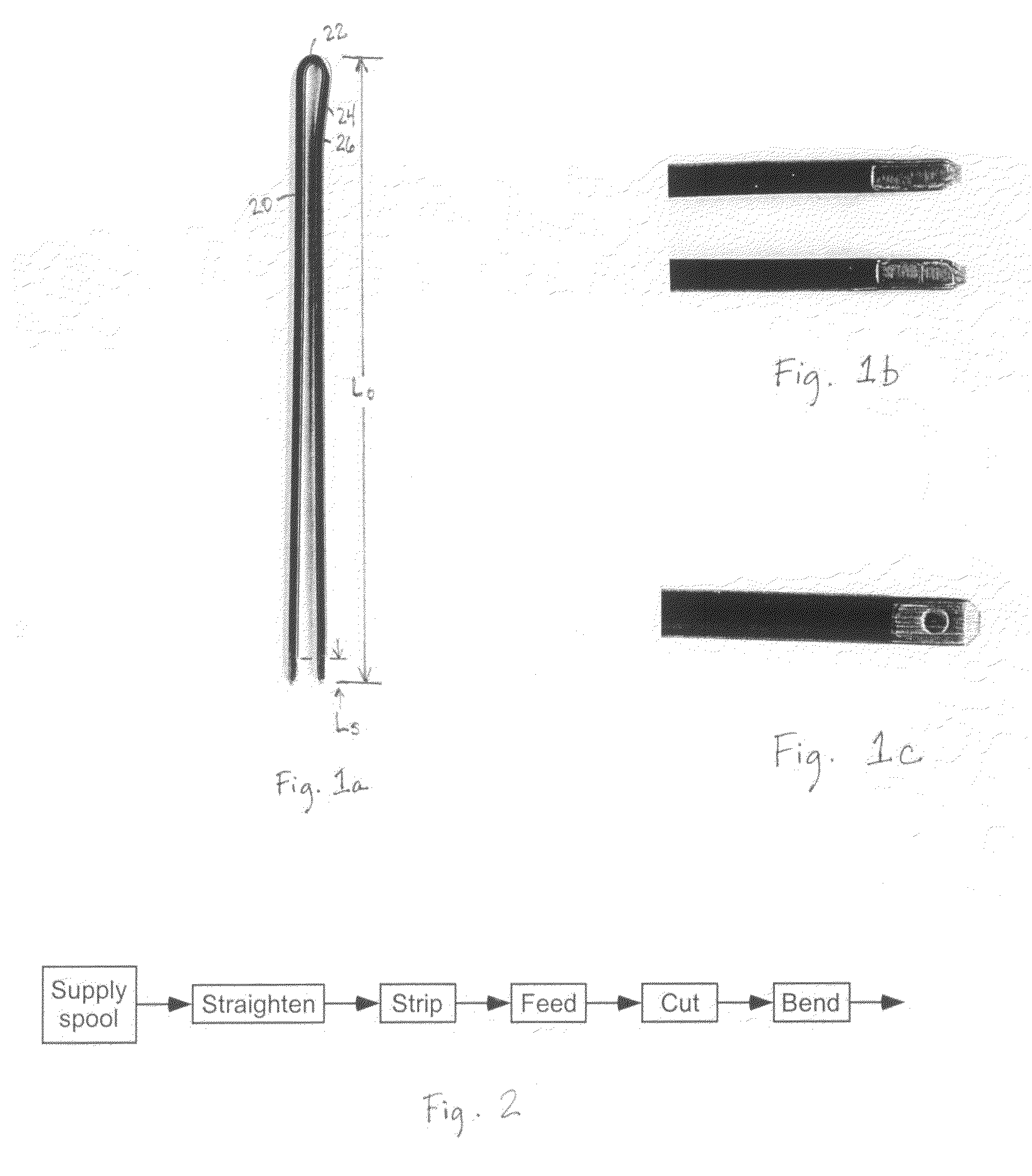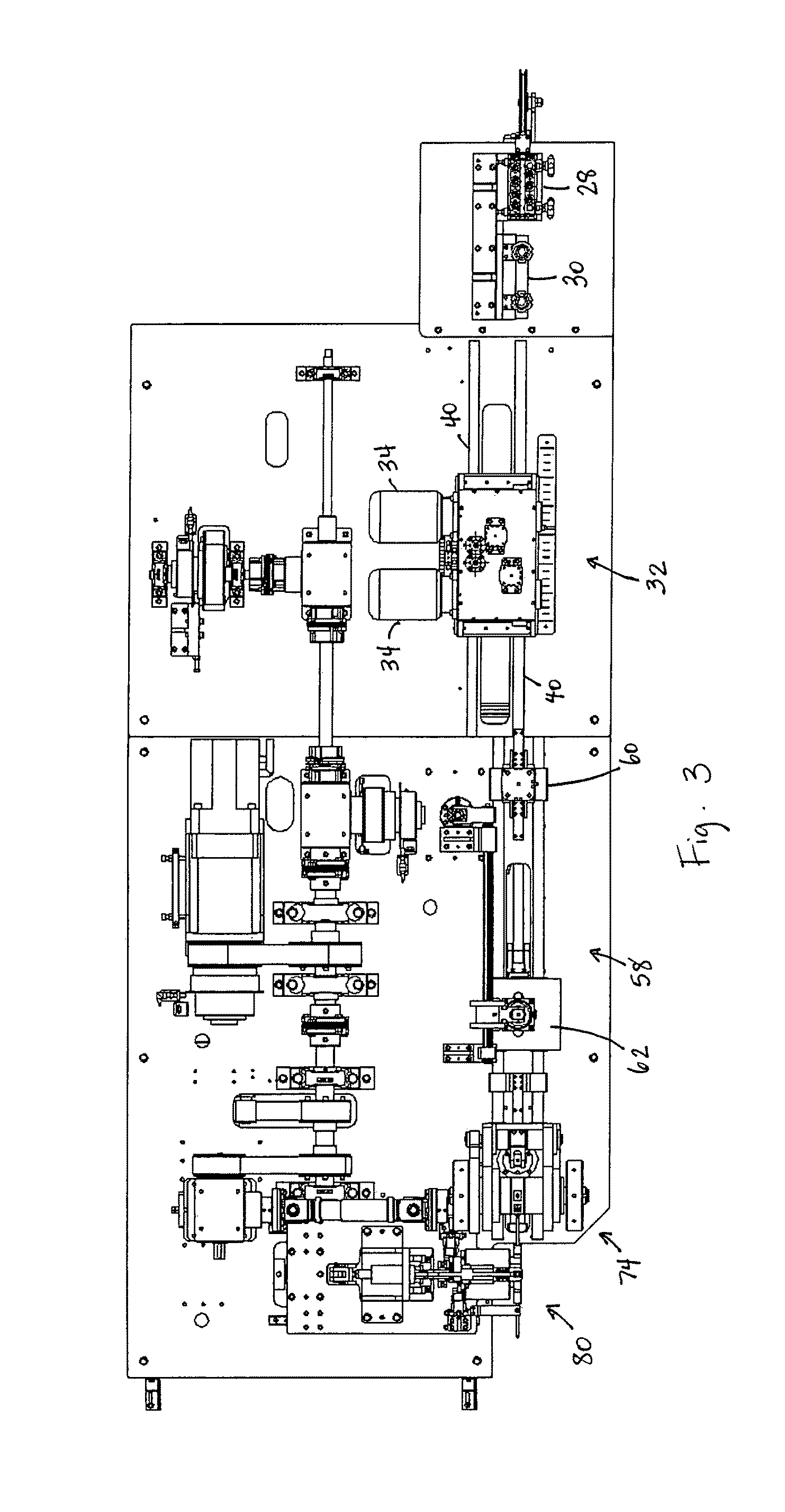Method for pre-forming conductors for motor rotors and stators
a technology of pre-forming conductors and motor rotors, which is applied in the manufacture of contact parts, cable installation apparatus, dynamo-electric machines, etc., can solve the problems of high labor intensity, slow and laborious process described above, and not suitable for mass production motors
- Summary
- Abstract
- Description
- Claims
- Application Information
AI Technical Summary
Benefits of technology
Problems solved by technology
Method used
Image
Examples
Embodiment Construction
[0016]In the description of preferred embodiments of the present invention to follow, the terms “flat”, “square”, “rectangular” and “straight” will be used. Unless otherwise apparent, such terms are used in accordance with the definitions thereof set forth in the prior art section above.
[0017]The purpose of the present invention is to automatically form the hairpin shaped conductors of rectangular wire for automatically manufacturing motor rotors and stators of the type described above. An exemplary hairpin conductor may be seen in FIG. 1a and is characterized by an overall length L0, formed by bending a rectangular insulated conductor with the ends thereof being stripped of insulation over the length LS. The typical insulation on the hairpin conductors is a typical motor or solenoid winding insulation well known in the motor art. In a preferred embodiment of the invention, one side 20 of the hairpin conductor as formed is substantially flat up to the loop 22, with the upper portion...
PUM
| Property | Measurement | Unit |
|---|---|---|
| thickness | aaaaa | aaaaa |
| width | aaaaa | aaaaa |
| lengths | aaaaa | aaaaa |
Abstract
Description
Claims
Application Information
 Login to View More
Login to View More - R&D
- Intellectual Property
- Life Sciences
- Materials
- Tech Scout
- Unparalleled Data Quality
- Higher Quality Content
- 60% Fewer Hallucinations
Browse by: Latest US Patents, China's latest patents, Technical Efficacy Thesaurus, Application Domain, Technology Topic, Popular Technical Reports.
© 2025 PatSnap. All rights reserved.Legal|Privacy policy|Modern Slavery Act Transparency Statement|Sitemap|About US| Contact US: help@patsnap.com



